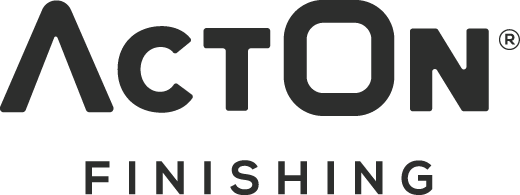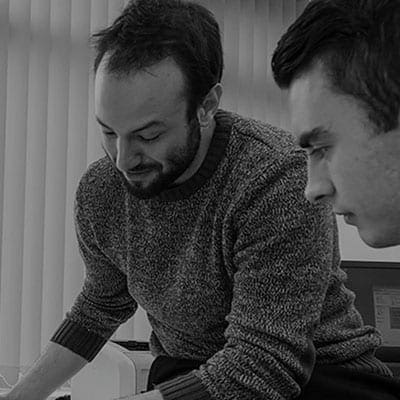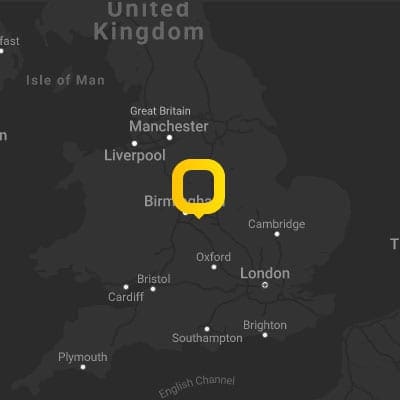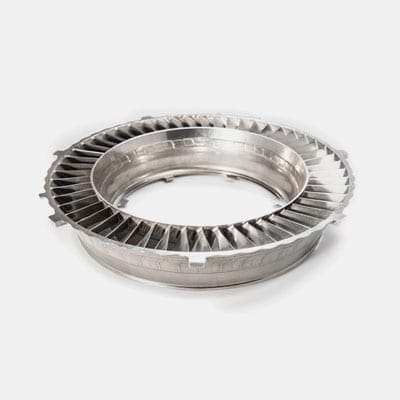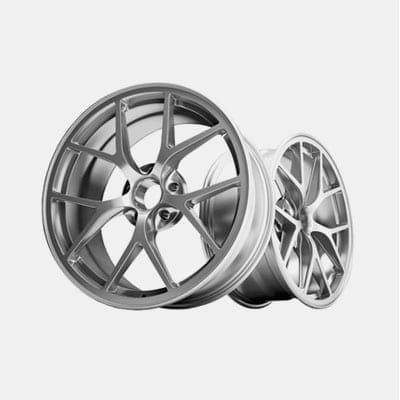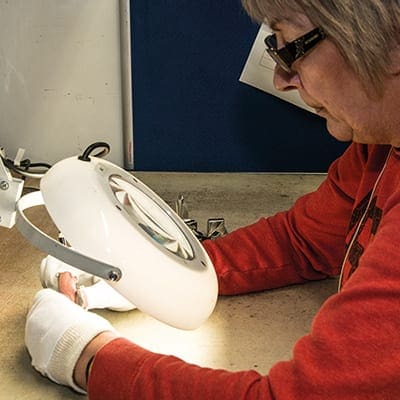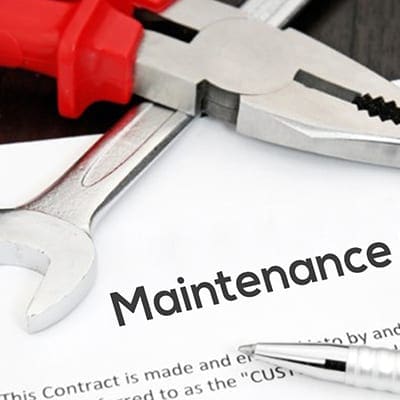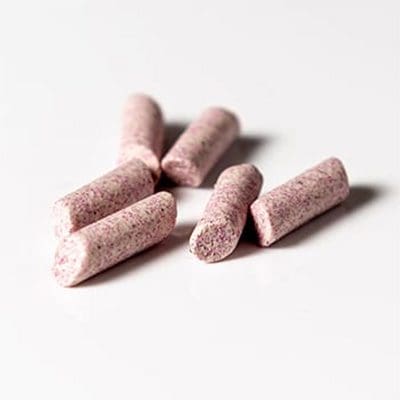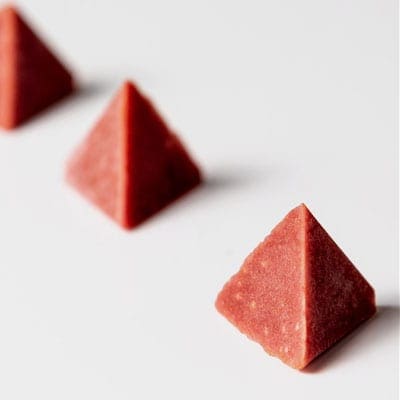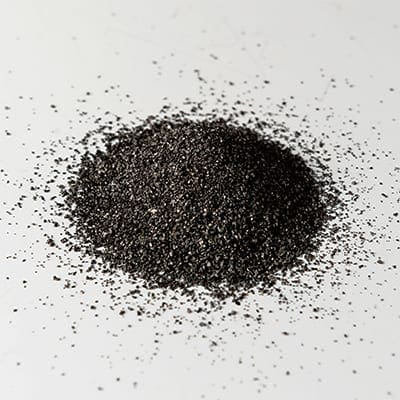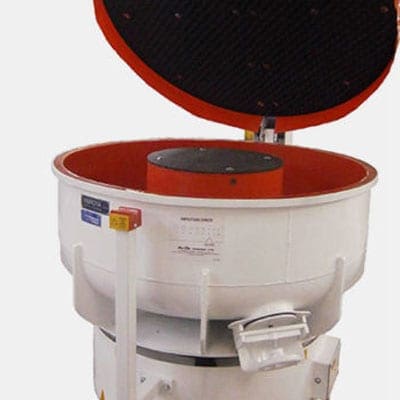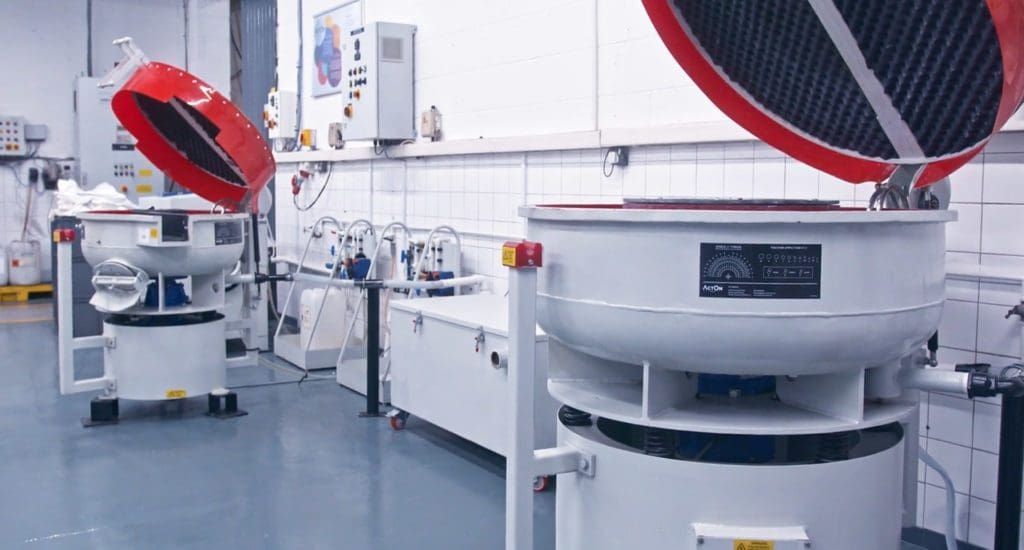
Are you looking to improve your manufacturing processing time and costs? Try vibratory finishing and discover a whole range of great benefits in addition to time and money savings.
The Vibratory Finishing Process:
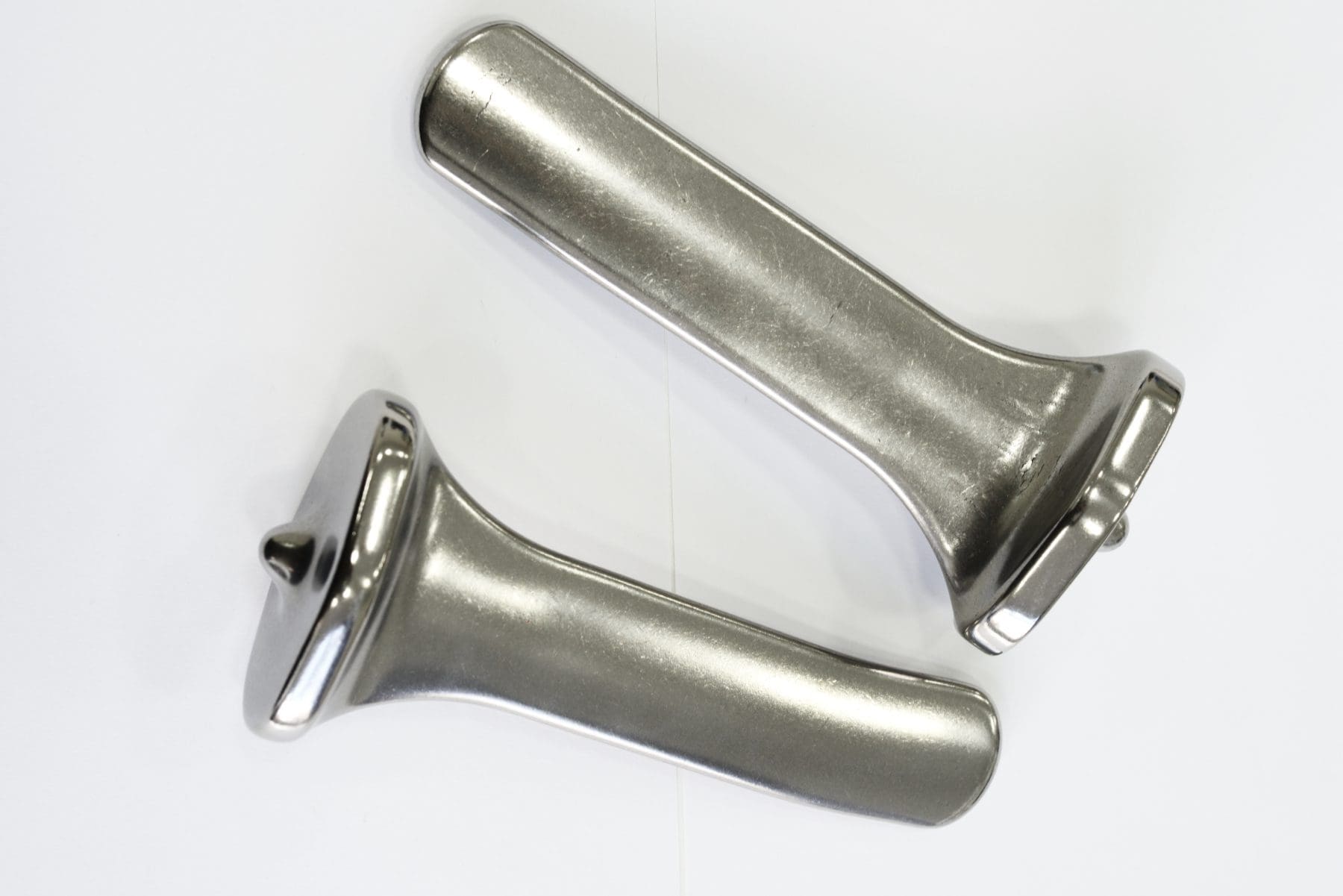

The versatility of the vibratory finishing process means it can be used for a wide variety of finishing applications, such as deburring, descaling, degreasing and oil removal, cleaning, smoothing, removing machining lines and surface defects, radiusing, brightening, polishing, drying, corrosion protection, turbocut, chemcut and ActoGrind.
With ActOn Finishing this versatility extends to developing a finishing process according to your requirements. From conducting finishing trials to establish all process parameters, to designing and manufacturing the equipment and consumables, our aim is to make your manufacturing process more efficient. We can also train your staff and offer maintenance contracts to ensure your process and machines run correctly.
A range of cost and time saving benefits
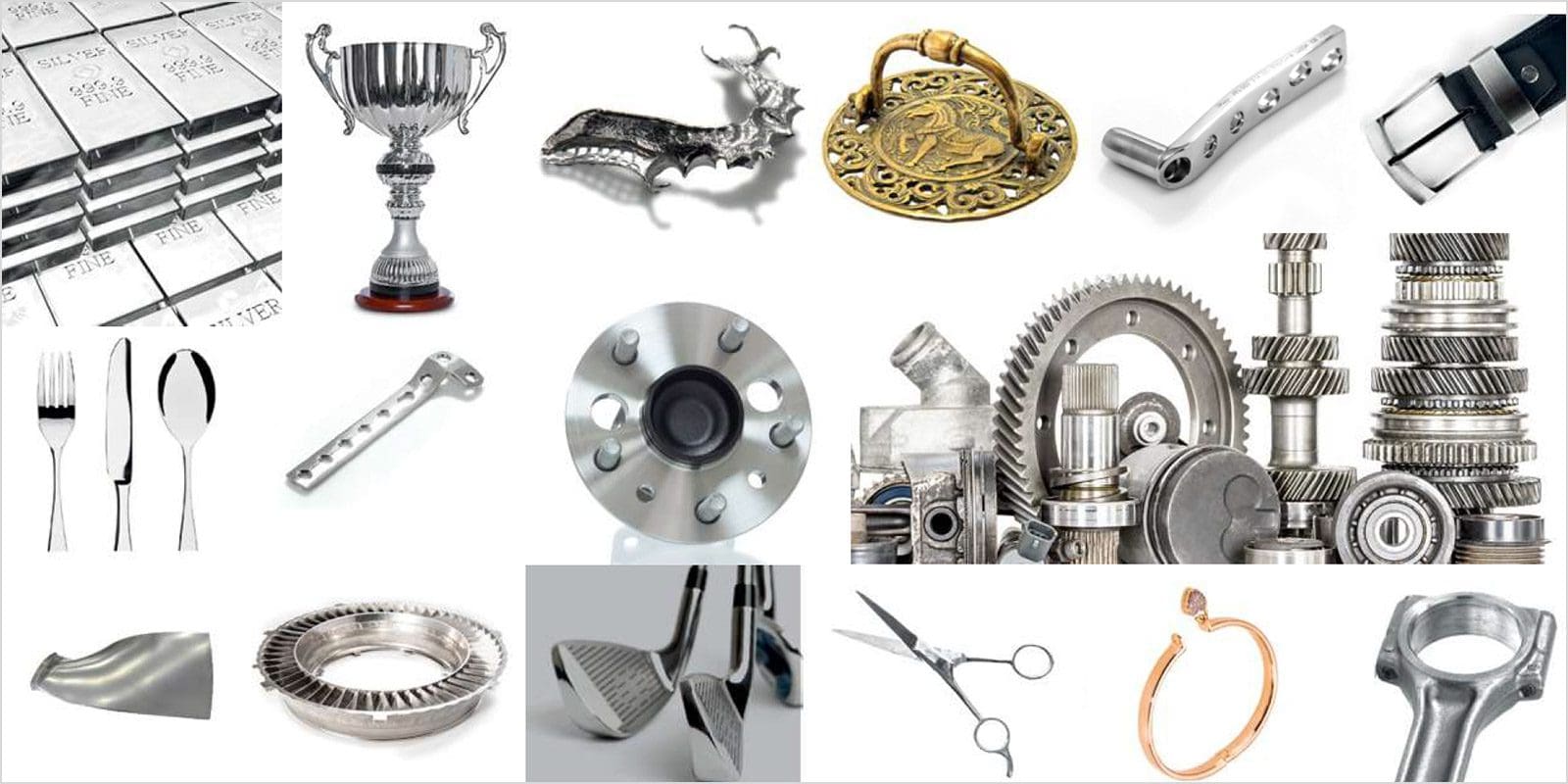

Vibratory finishing machines can save you time and money in comparison with tumble finishing or manual finishing, as these machines can:
- Be used as batch finishing machines
- Can process large quantities of components at a time
- Are designed and manufactured to ensure process control and repeatability
- Offer increased consistency in terms of final finishing result. Hence there is no need to carry out reworks or to scrap components.
- Can handle a wide range of materials from hard metals to polymers and different parts’ shapes and sizes
- Can be automated, hence there is minimum reliance on operators
- Can be tailored to suit different finishing process
By using ActOn’s vibratory finishing systems, in a wide range of industries, we can guarantee that, not only will the parts be finished to a high standard, you’ll also save time and money. For example, in the hospitality industry, one employee can usually polish between 500 and 600 pieces of cutlery per hour. In the same time, our HT2 vibratory finishing machine can process 3000 to 3500 pieces of cutlery in 1 hour. This time will be better spent by the employees in other areas such as collecting orders or serving tables, while our machine is carrying out the finishing job. Moreover, you can save in 1 year approx. £6205, when using a HT2 machine to polish cutlery.
Another example is the vibratory finishing solution we offered to Rolls Royce Bristol to improve the cleaning process for various parts such as matting, rubber caps, handles, plates and cruciform; ensure a faster process time; and provide more consistent results. Beside improving the cleanliness of these components, the vibratory finishing process benefits included:
- time was reduced from 60 minutes to 10 minutes
- client was able to finish 3 times more volume at once
- there was less water consumption in the process.
The implementation of this mass finishing solution, in the 3d printing industry, can offer a reduced cost per part, consistent results and a short ROI often 6-12 months as compared to other solutions available in the market. More importantly, we have proved that we can improve, through vibratory finishing, the Ra value to 3 Micron, leaving the surface of the parts smooth. To learn more about our cost effective finishing solutions for 3D printed parts, manufactured via Selective Laser Sintering, check out our case study.
A comprehensive choice:
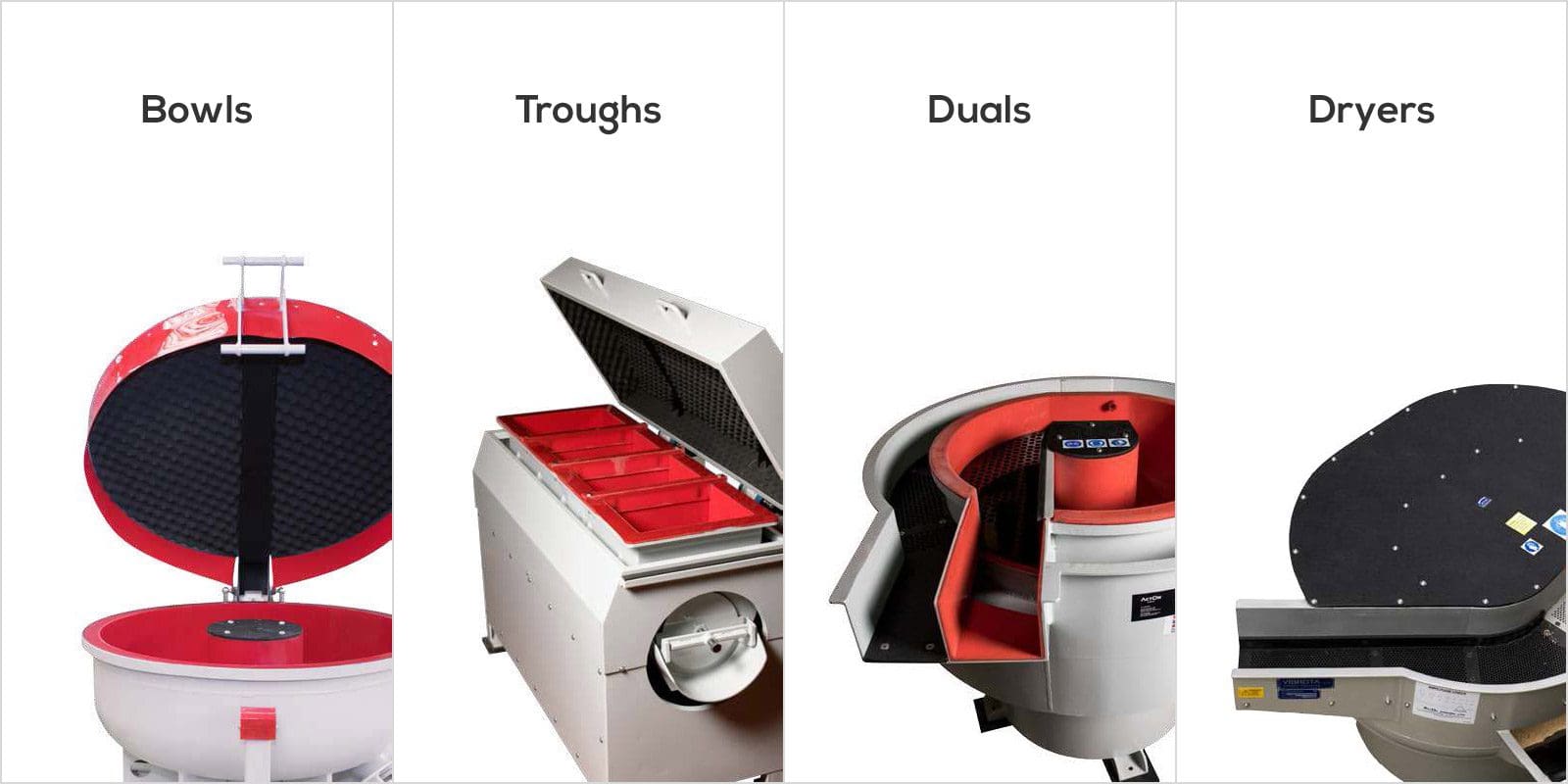

These machines are efficient and simple to operate, meeting a wide range of applications including deburring, radiusing, descaling, cleaning, smoothing and polishing your components.
With a fantastic range of sizes, including choices in length and width combinations, our vibratory finishing troughs are especially efficient when it comes to mass finishing larger, longer and irregular-shaped components.
Easy to operate and great if you’re short on space, our vibratory dual machines offer wet and dry surface finishing processes in one machine.
Designed to be easy to integrate with our range of vibratory finishing machines, these machines are perfect for drying, cleaning and polishing applications.
Vibratory finishing in action
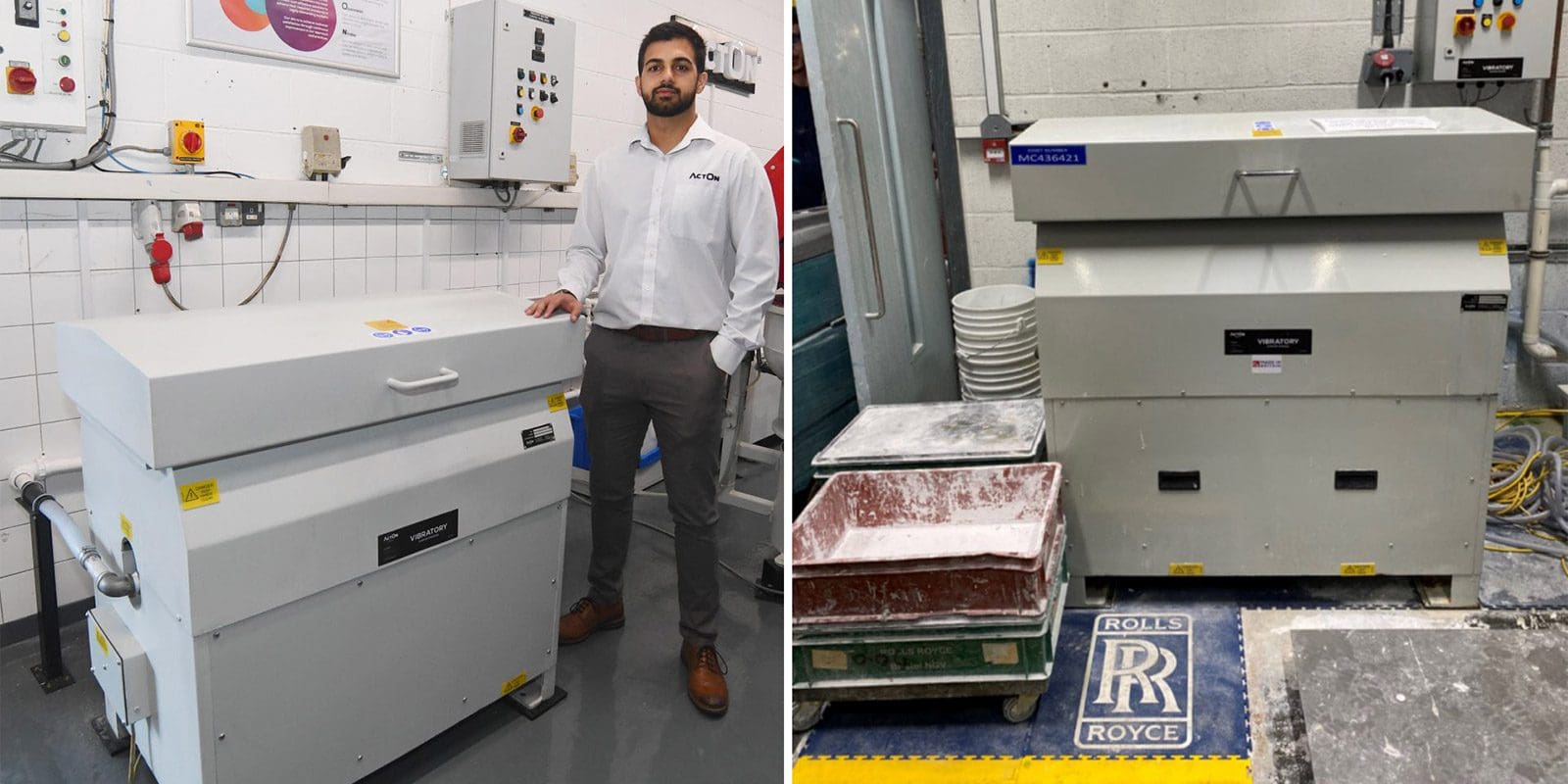

Want to know more about how the vibratory finishing process works for our clients? Check our case studies. We have shared all the tips and tricks we know about vibratory finishing and technical and educational content dedicated to real-world components, like medical implants, 3d printed components, brass stampings, automotive wheels and many more.
You can also contact us to arrange a consultation to go over your requirements when it comes to vibratory finishing, including our comprehensive after-sales package that comes with a spare parts and refurbishment service, maintenance contracts and technical advice.
We look forward to hearing from you.
FAQs
What is a vibratory finishing machine?
As a common finishing method in the manufacturing industry, vibratory finishing is an efficient process used to optimise all types of small products and parts. Vibratory finishing machines help you clean and deburr products at a faster pace.
What is vibratory deburring?
Vibratory deburring removes the rough edges from parts and enables them to fit together more efficiently. This leads to fewer part rejections as well as improved safety. In addition, deburring is an important step in preparing parts for painting.
How does vibratory polishing work?
In this stage a combination of media, parts and compounds are placed in a vibrating machine. The vibrations cause the contents to move in a circular motion and the media to grind against the part to get the desired finish.
What is a tumbling barrel?
Barrel finishing, also known as barrel tumbling or vibratory finishing, is a surface improving operation in which a mixture of parts, media and compounds are placed in a six- or eight-sided barrel and rotated at a predetermined speed for the purpose of rounding corners, deburring, grinding, descaling, deflashing, improving surface finish and much more.
What are the different types of finishing?
There are several types of metal finishing such as metal plating, chemical finishing or coating, grinding, buffing, electroplating, and sandblasting. Each process has basic steps with all processes beginning with surface preparation. Metal finishing processes can include anything from technical processes to buffers.

